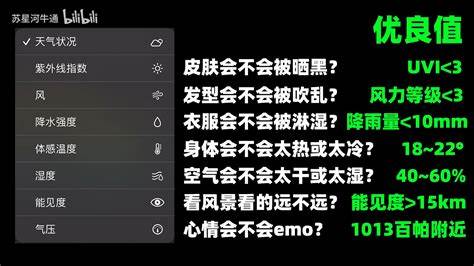What information does a weather forecast generally contain?
发布:☆刀霸※离伤☆
Collecting data
The most traditional data is collected on the ground or at sea by professionals, amateurs, automatic weather stations or buoys Air pre ssure, temperature, wind speed, wind direction, humidity and other data. The World Meteorological Organization coordinates the timing of these data collections and sets standards. These measurements are made every hour (METAR) or every six hours (SYNOP).
Using weather balloons, meteorologists can also collect the temperature, humidity, and wind values in the sky. Weather balloons can rise all the way up to the tropopause.
Data from weather satellites are becoming more and more important. Weather satellites collect data from around the world. Their visible-light photos help meteorologists examine cloud development. Their infrared data can be used to collect ground and cloud top temperatures. Wind speed and direction at the edge of the cloud can be collected by monitoring cloud development. However, because the accuracy and resolution of weather satellites are not good enough, ground data is still very important.
Weather radar can provide information on pre cipitation areas and intensity. Doppler radar can also determine wind speed and direction.
Data Assimilation
In the process of data assimilation, the data collected are combined with the numerical model used for forecasting to produce meteorological analysis. The result is the best estimate of the current state of the atmosphere, a three-dimensional repre sentation of temperature, humidity, air pre ssure and wind speed and direction.
Digital Weather Forecasting
Digital weather forecasting uses computers to simulate the atmosphere. It uses the results of data assimilation as its starting point to calculate changes in the atmosphere over time according to today's results from physics and fluid dynamics. Because the equations of fluid dynamics are so complex, digital weather forecasting is only possible using supercomputers. The output calculated by this model is the basis for weather forecasts.
Output processing
The original output of model calculation generally needs to be processed before it can become a weather forecast. These processes include using statistical principles to eliminate known biases in the model, or making adjustments based on calculation results from other models.
In the past, meteorologists had to do the processing themselves. Today, weather forecasts for more than 24 hours mainly rely on the use of multiple different models and the synthesis of their results. Meteorologists must also analyze the forecast model data to make it understandable to end users. In addition, the resolution of weather forecast models is generally not particularly high. Local meteorologists must also use local experience to make local weather forecasts more accurate when it comes to regional influences. However, as weather forecast models continue to become more sophisticated, this workload is getting smaller and smaller.
Display
For end users, the display of weather forecast is the most important in the entire process. This task can only be accomplished by knowing what information the end user needs and how to communicate this information to the end user in an understandable way.
1. Rain, rain, and snow in a region or city in the future.
2. The highest and lowest temperatures in a region or city in the future.
3. The wind direction and force of a region or city in the future.
4. Special disastrous weather in a region or city in the future.
The satellite cloud images of my country's Central Meteorological Observatory are taken from meteorological satellites such as "Fengyun-1". Using satellite cloud images and photos for analysis can improve the accuracy of weather forecasts.
Weather forecasts are usually divided into three types in terms of duration: short-term weather forecast (2 to 3 days), medium-term weather forecast (4 to 9 days), and long-term weather forecast (10 to 15 days or more). CCTV broadcasts mainly short-term weather forecasts every day.

以上就是关于What information does a weather forecast generally contain?的全部内容,希望能够帮到您。
版权声明:本文来自用户投稿,不代表【大桂阳分类信息】立场,本平台所发表的文章、图片属于原权利人所有,因客观原因,或会存在不当使用的情况,非恶意侵犯原权利人相关权益,敬请相关权利人谅解并与我们联系,我们将及时处理,共同维护良好的网络创作环境。
大家都在看
-

沙湾未来天气40天天气预报
墨迹天气。墨迹天气,一款天气信息查询软件,性化设计,使用简单,是中支城最多的天气预报软件。全球约5亿在使用的天气APP,支196个家70多万个城及地区的天气查
-

北京一月份天气温度2024
北京2024年元旦气温大概多少度北京2024年元旦天气怎么样们在问2024年元旦北京的气温是多少。最后,元旦我们家大部分地区进入寒冷的冬季,所以我们需要到户外去玩。因冰天雪地
-

我的苹果天气不显示实时雨量
数据不准确:天气预报的数据是通过气象观测、模型预测等手段获取的,但由于气象现象的复杂性和不确定性,数据可能存在误差,导致预报结果与实际情况不符。2.预报时间段不包含降
-

4月初的欧洲什么天气
巴黎一年四季的天气是什么样的春季(3月至5月),巴黎气候温和,但偶尔下雨,平均气温为7°C至15°C。这个季节正是赏花、户外活动的好时节。夏季(6-8月),巴黎阳明媚,气温
-

宜宾江安教师招聘2024
江安属于哪个宜宾.江安,隶属于四川宜宾,位于四川南缘,江之滨,宜宾以东,三(宜宾、泸州、自贡)交汇处。截至2024年2月4日,该区面积948.46平方公里,下辖14个
-

开封天气预报最新7天
开封未来几天的天气情况开封天气预报(发布2010-01-1908:00)查看未来4-7天天气预报天气解释日期天气现象气温风向风力周二19日阴天白天高温10℃无续风微风多云低温气温1℃无续风向微
-

沈阳教师招聘2023年考试时间
招教考试时间2023上半年笔试将于3月11日举行,面试将于5月13日至14日举行。教师招聘考试是对取得教师资格证后聘用的教师进行的竞争性考试。全各地教师招聘考试的形式和课程不
-

沧州师范学院2024招聘教师简章
2024年辽宁493分能考上什么大学?录取过辽宁新高考493分学生的专科院校或职业院校有:安徽农业大学、沧州师范学院、江大学、河北北方学院、延安大学等。完整名单见下表:分数来源
-

中石油2024校园招聘面试时间
中石油【庆油田】2024年度校招要求及岗位介绍中石油【庆油田】2024年校园招聘已全面启动,具体如下:1公司概况庆油田作为是中石油天然气股份有限公司的重要组成
-

荣耀100桌面天气预报不见了
华为荣耀手机为什么天气预报桌面上设置不了?桌面天气丢失了怎么设回来对于荣耀手机,您可以通过以下步骤将桌面小部件添加到桌面:用两根手指捏合桌面,进入桌面辑状态。
